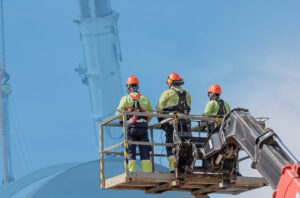Earlier during the Covid-19 pandemic the government advised those who were considered to be clinically extremely vulnerable to “shield”. This involved placing some quite severe restrictions on the lives of those individuals which could lead to social isolation and, while offering protection from infection, for some this had a significant impact on their lives and their mental and physical wellbeing.
Affected groups included people with severe respiratory conditions, solid organ transplant recipients, people with certain cancers and people on immunosuppression therapies.
As knowledge of the disease grows, effective treatments are developed and with the success of the vaccination programme it is now considered that a suitable stage has been reached to allow this guidance to be withdrawn. Those previously advised to shield should now follow the same advice as the rest of the population.
So what does this mean for employers?
This effectively returns to the situation pre-Covid-19, where people’s conditions were managed on a case by case basis in cooperation with their health professionals and employers.
When an employer becomes aware that an employee has a particular vulnerability, whether this is a disability, an allergic reaction to specific substances, returning to work after an illness or injury, or anything else then the employer has a duty to assess risks and put in place any relevant controls.
It is advisable to start with a risk assessment which should look at a number of factors;
- The nature of the job, the way it is organised and managed and the impact of the work environment and culture on the employee
- The employee’s physical, psychological and social well being and how that affects their ability to do their job;
- The resources, training and workplace adjustments that can be provided to support the employee if required.
A good first step is to arrange a meeting with the employee to discuss their requirements for continuing to work.
The purpose of any risk assessment is to examine what could cause harm and consider how likely it is that people could be harmed. Depending on the exact circumstances there may be some element of rehabilitation and deciding whether any additional control measures are needed. Controls can include management systems as well as physical alterations. This is usually best discussed with the employee involved and / or relevant occupational health / medical professionals.
Where an employee or others face increased risk, the risk assessment should be amended accordingly. An action plan should also be drawn up describing the control measures that will have to be introduced and how they will be implemented. These measures should be reviewed as appropriate to make sure they are working effectively.
It may be that it is necessary to make some adjustments to allow the employee to continue to work. The key steps in planning adjustments are:
- Consider the needs of your employee and what they can do
- Assess the possible obstacles to your employee’s return
- Consider the adjustments needed to overcome these obstacles
- Review health and safety risk assessments in the light of the proposed adjustments
- Review how well the adjustments work
- Seek professional advice, where necessary, to help you make informed decisions.
It may be that the employee is able to provide all the information you need. If this is not the case then you may need some additional help either from their GP / Specialist.
Please speak to your normal PIB Risk Management contact or get in touch using [email protected] if you have any questions.
Details of Government announcements can be found at:
England: https://www.gov.uk/government/news/shielding-programme-ends-for-most-vulnerable

New rules for providers of social housing in England

Small but mighty – working safely with nanomaterials

Do you have a MEWP rescue plan?

Changing the asbestos control regime

HSE Launch Motor Vehicle Paint Spraying Campaign
